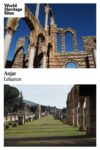Anjar
By Rachel Heller
What is Anjar?
Anjar is a ruined Umayyad city from the 8th century, located east of Beirut, Lebanon. It was founded in the early 700s and was never completed because it was destroyed in 744 AD. The walls remain, though in a ruined state, and so does the original street layout.
The location was important because it was at a crossroads: the point where the route between Beirut and Damascus met the Homs-Tiberias route.
Disclosure: This article contains affiliate links. Making a purchase through an affiliate link will mean a small commission for this website. This will not affect your price.
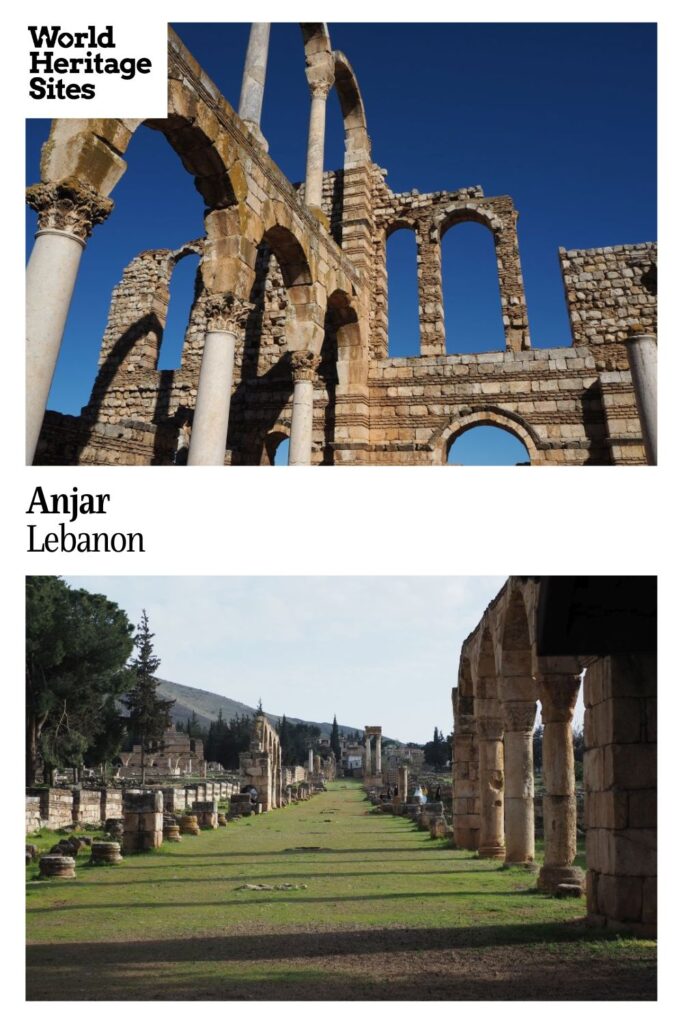
Why is Anjar a UNESCO World Heritage site?
Because it was destroyed so soon after it was built, the Anjar ruins are a clear demonstration of Umayyad town planning, largely preserved – the town plan, not the buildings. While parts of it were used in the Middle Ages for various purposes, it was mostly forgotten until archeologists discovered it in the 1940s. The ruins “therefore constitute a unique example of 8th century town planning,” according to UNESCO.
The town was rectangular, with a wall defended by 40 towers and a gate in each side. It had a regular grid-like street plan and was divided into four sectors. At the highest point of the rectangle were the palace of the Umayyad Caliph and the mosque. The lowest point had the smaller palaces and the public baths were there so the water could be channeled out as needed. The rest of the city held all the other functions a city would need: public facilities, businesses, residences, and so on. The city had an integrated sewer system and water supply as well.
UNESCO also mentions the architectural style of the few remaining structures: “The evolution of certain protobyzantine styles towards a more developed Islamic architecture is apparent in the building techniques as well as in the architectonical and ornamental elements employed.” In other words, they show an early phase in the evolution of Islamic architecture that emerged later in the Byzantine period.
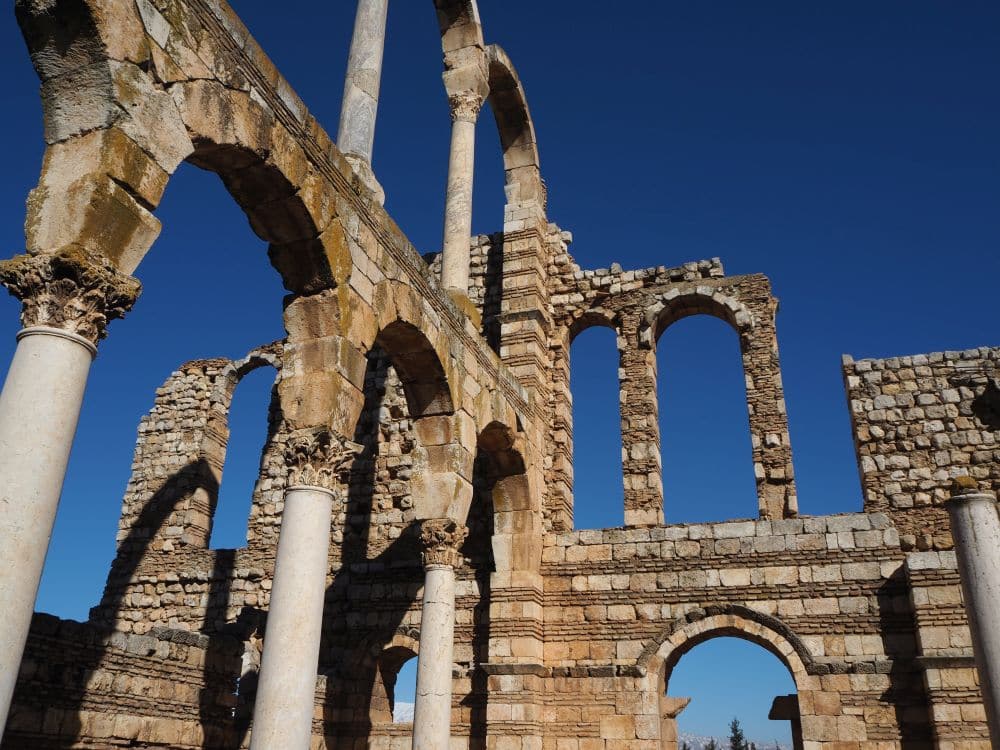
What can you expect on a visit to Anjar?
The walls surrounding the site are still impressive today, despite the fact that they’re not as high as they once were. Their sheer mass is what impresses. Inside the site, visitors can stroll anywhere around the town – which was only about 400 by 300 meters in size (1310×98 ft) – to understand the original layout.
As for buildings, there’s not much left except for a few wall remnants and a larger section of the Caliph’s palace at one end of the site. A few arches have been reassembled along the main north-south road crossing the site, but not necessarily correctly reassembled. A few very faded mosaics have survived in what was the bath house.
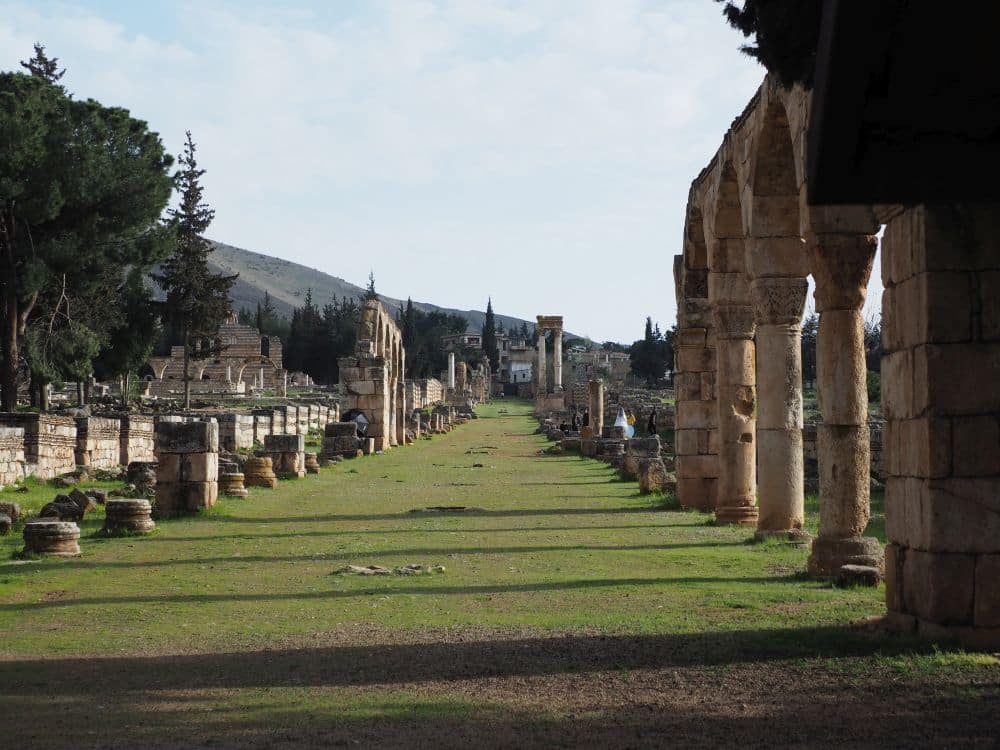
Next door, the modern town of Anjar has a special story. It is inhabited almost exclusively by descendants of Christian Armenians refugees who moved here from Turkey in 1939. The construction of the town was largely funded by the French government and follows a tidy street plan. The local municipality has become a model in many ways of successful city governance.
Is Anjar worth visiting?
Lebanon has five UNESCO sites, and I would prioritize any of the others over this one. It may be interesting in terms of archeology and the history of the Ummayad period, but there’s just not much left to see. What is left just seems a jumble of low walls and stone fragments and fallen pillars, but the informational signs help make some of it clearer, so you can imagine what was once there. Nevertheless, if you are choosing between sites in Lebanon, give this one a miss and instead visit Baalbek, Tyre and/or Byblos.
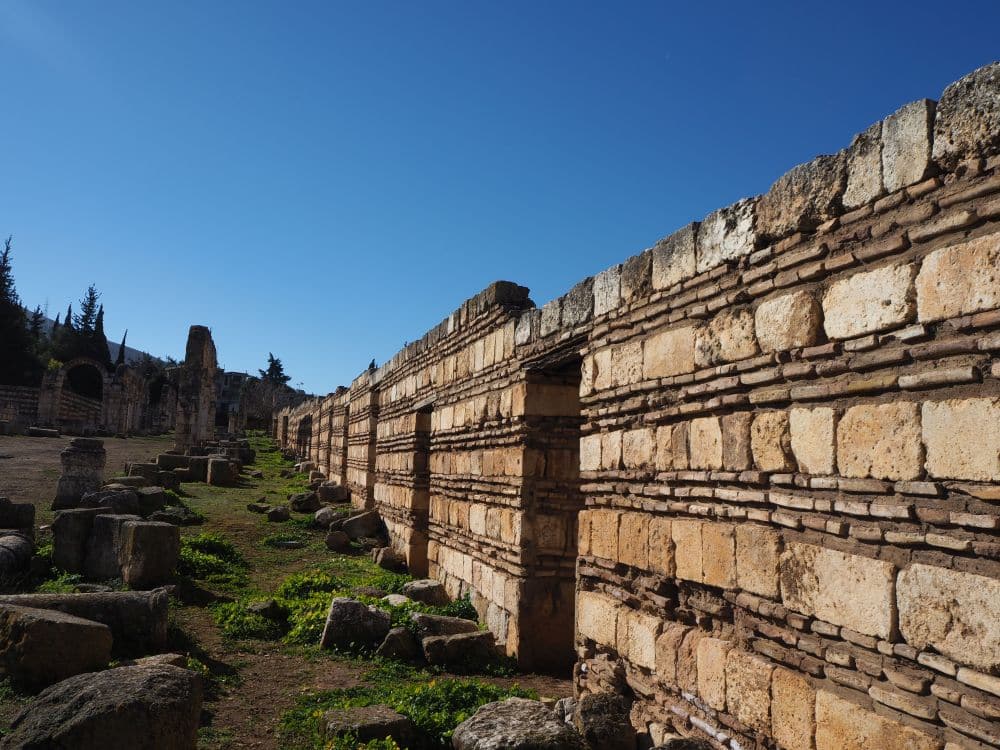
What sorts of travelers would like Anjar?
Generally this site will appeal to scholars of the Ummayad Caliphate, but that’s about it. There’s nothing for children either, except that there doesn’t seem to be anything stopping people from climbing the remaining walls, so kids might enjoy that aspect.
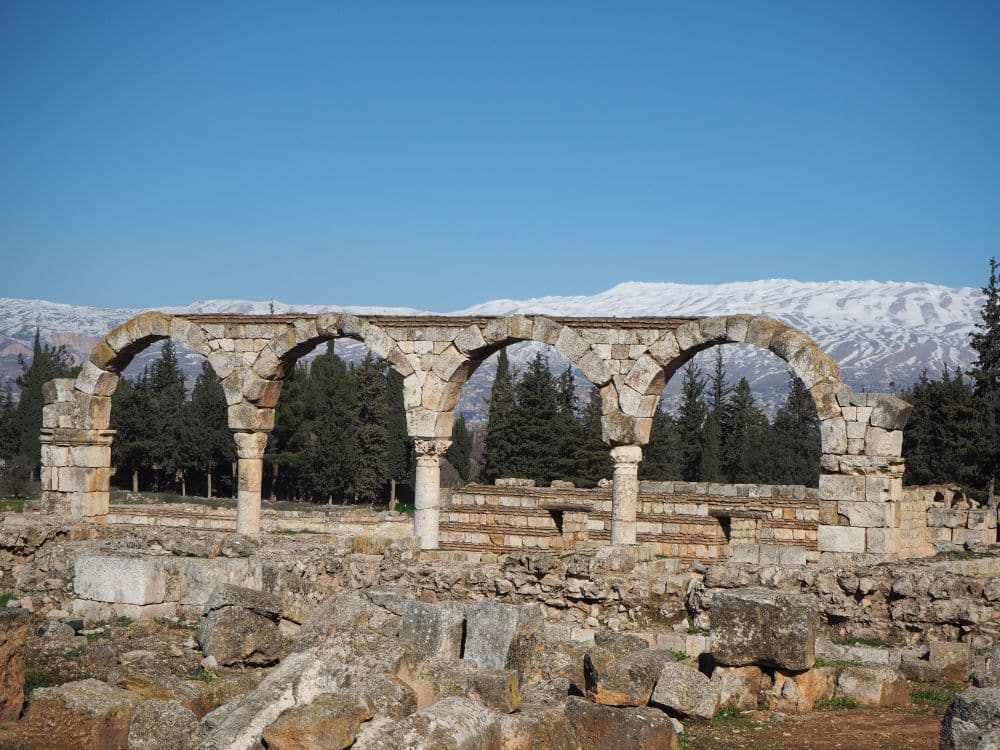
Tips for visiting Anjar
The US’s official advice for Lebanon – and that of other governments as well – is to “reconsider” travel to Lebanon. In particular, the border with Syria is “Level 4: Do Not Travel.” Anjar is quite near the border, so if you are determined to go there, only go with a local tour guide, leaving from Beirut, as I did.
Find accommodations in Beirut.
I spent a week with a company called Tourleb, a wonderful women-led, socially-responsible company. They tailored the tour to my interests and I highly recommend them.
Here are some other options for tours.
The banking system and money exchange are problematic in Lebanon. You can read some advice here.
In Anjar town you’ll find the surprising Anjar Art Gallery. It’s just one room, but it showcases local contemporary artists. I thought the quality of some of the artworks was very high: world class. It’s all available for sale; any of these works would make the best souvenir of Lebanon.
There’s also a little ethnographic museum in town where you can learn a bit about the local Armenian culture in this part of Lebanon.
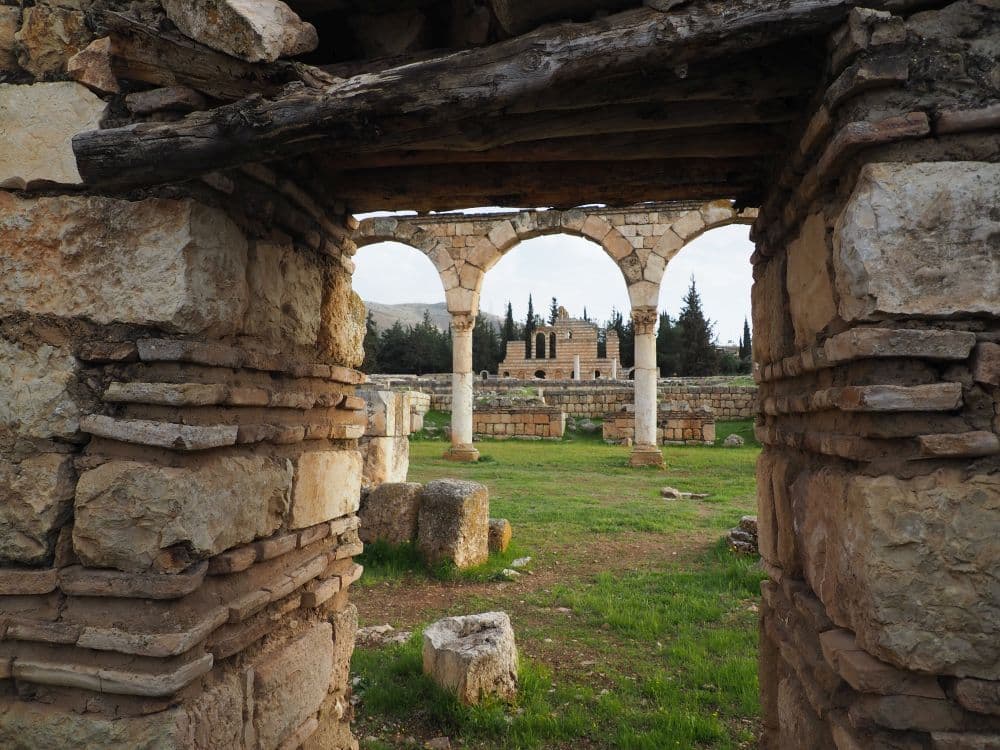
Where is Anjar?
Anjar is about an hour and a half east-southeast of Beirut. There are local buses, but the best way to get there is by car or minivan with a guide.
Admission to Anjar is free.
Have you been to Anjar? If so, do you have any additional information or advice about this UNESCO World Heritage site? Please add your comments below!

